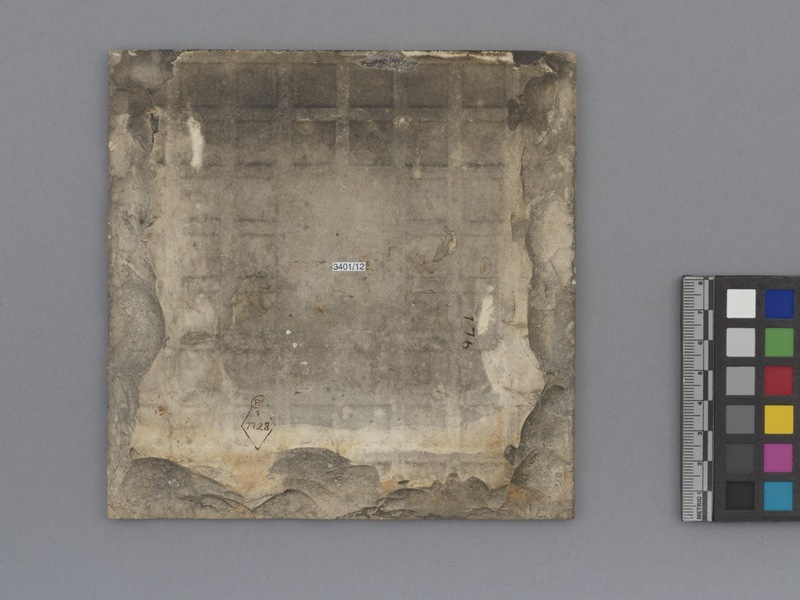Tile Item Number: 3401/12 from the MOA: University of British Columbia


Description
Square ceramic tile with floral and geometric motifs painted on front. Surface and sides are glazed. Background is dark brown. Triangle outlines, with plums(?) painted inside of them, in the tile corners. Triangle outlines connect to a white hexagon outline, in the centre of the tile, with diagonal lines. Designs of peaches and plums, surrounded by light and dark green leaves, inside of hexagon. In the space between the hexagon outline and the edges of the tile are depictions of light purple and pink plum blossoms with white leaves. Raised grid across entire back of tile. Inscriptions, handwritten and stamped, on back.
Iconographic Meaning
Peach and plum branches are depicted. These fruits are more prominent in Japanese art, which significantly influenced British design at the time. Plums and peaches are a Japanese symbols of longevity and joy. The registration on the backside dates the pattern between 1887 and 1888.
Specific Techniques
Tile was manufactured by dust-pressing, a technique that uses clay milled to a fine powder with low moisture content, then pressed in a die at high pressure. The design was transfer-printed, a technique in which an image from an engraved plate is transferred to a tile, usually, requiring transfer paper to be run through a printing press with the engraved plate to pick up the ink, the design from the transfer paper could then be rubbed onto the tile. The colour was painted on by hand.
Cultural Context
Wall tile.
Item History
- Made in United Kingdom and England during 1888
- Owned by Judith Stoffman before October 30, 2019
- Received from Judith Stoffman (Donor) on October 30, 2019
What
- Name
- Tile
- Identification Number
- 3401/12
- Type of Item
- tile
- Material
- clay, paint and glaze
- Manufacturing Technique
- dust-pressed, transfer-printed and hand-painted
- Overall
- height 15.6 cm, width 15.6 cm, depth 1.2 cm
Who
- Culture
- English
- Previous Owner
- Judith Stoffman
- Received from
- Judith Stoffman (Donor)
Where
- Holding Institution
- MOA: University of British Columbia
- Made in
- United Kingdom and England
When
- Creation Date
- during 1888
- Ownership Date
- before October 30, 2019
- Acquisition Date
- on October 30, 2019
Other
- Item Classes
- ceramics
- Condition
- fair
- Accession Number
- 3401/0012